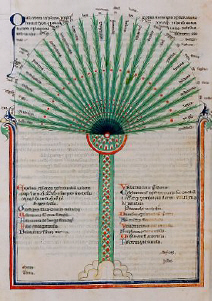3. How then do we go to work?
Let us begin by distinguishing Matter, Form, the Mixture of both, and the Attributes of the Mixture. The Attributes may be subdivided into those which are mere predicates, and those serving also as accidents. The accidents may be either inclusive or included; they may, further, be classified as activities, experiences, consequents.
Matter will be found common to all substances, not however as a genus, since it has no differentiae – unless indeed differentiae be ascribed to it on the ground of its taking such various forms as fire and air.
It may be held that Matter is sufficiently constituted a genus by the fact that the things in which it appears hold it in common, or in that it presents itself as a whole of parts. In this sense Matter will indeed be a genus, though not in the accepted sense of the term. Matter, we may remark, is also a single element, if the element as such is able to constitute a genus.
Further, if to a Form be added the qualification “bound up with, involved in Matter,” Matter separates that Form from other Forms: it does not however embrace the whole of Substantial Form (as, to be the genus of Form, it must).
We may, again, regard Form as the creator of Substance and make the Reason-Principle of Substance dependent upon Form: yet we do not come thereby to an understanding of the nature of Substance.
We may, also, restrict Substance to the Composite. Matter and Form then cease to be substances. If they are Substance equally with the Composite, it remains to enquire what there is common to all three.
The “mere predicates” fall under the category of Relation: such are cause and element. The accidents included in the composite substances ire found to be either Quality or Quantity; those which are inclusive are of the nature of Space and Time. Activities and experiences comprise Motions; consequents Space and Time, which are consequents respectively of the Composites and of Motion.
The first three entities (Matter, Form, Composite) go, as we have discovered, to make a single common genus, the Sensible counterpart of Substance. Then follow in order Relation, Quantity, Quality, Time-during-which, Place-in-which, Motion; though, with Time and Space already included (under Relation), Time-during-which and Place-in-which become superfluous.
Thus we have five genera, counting the first three entities as one. If the first three are not massed into a unity, the series will be Matter, Form, Composite, Relation, Quantity, Quality, Motion. The last three may, again, be included in Relation, which is capable of bearing this wider extension.
